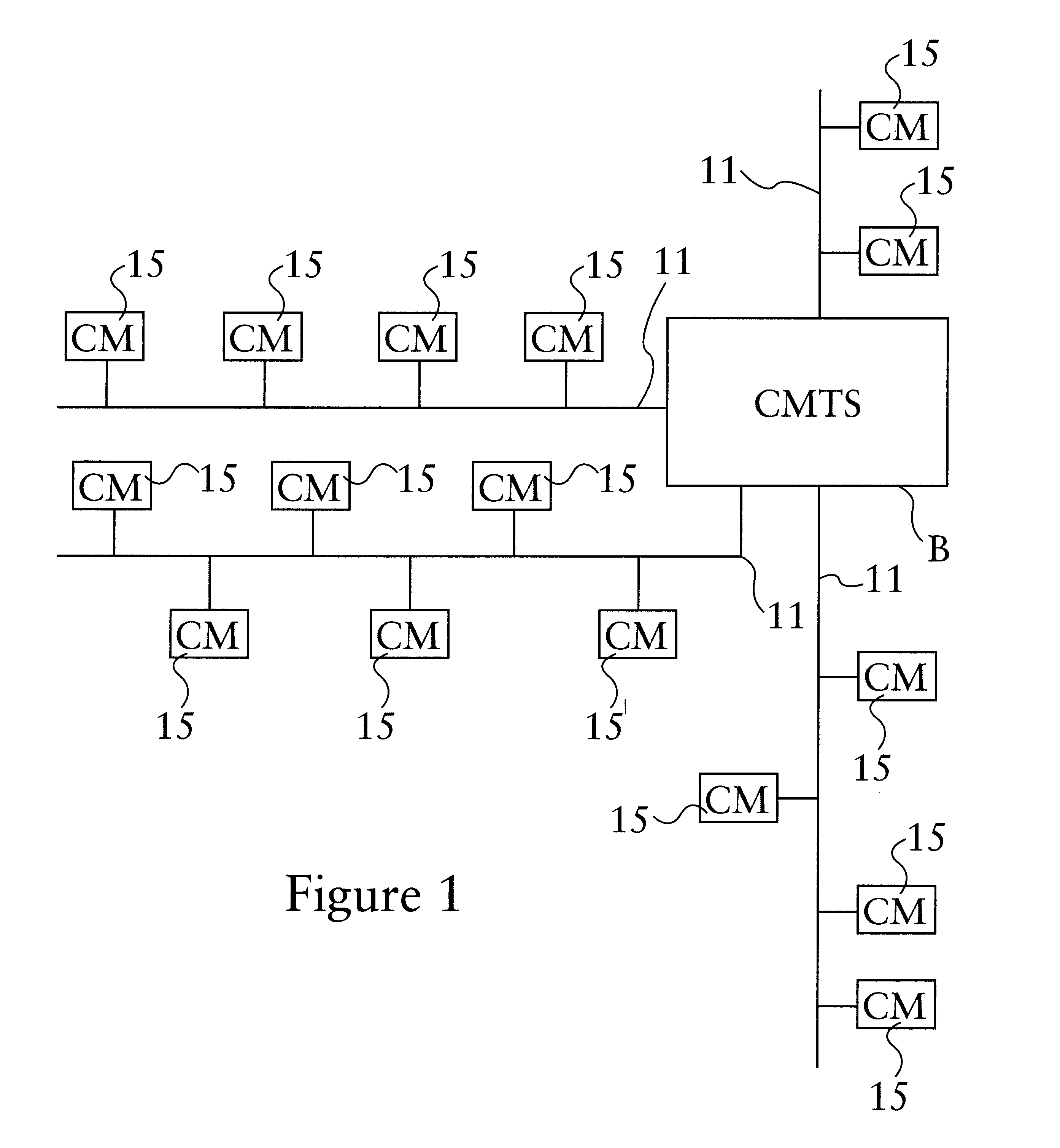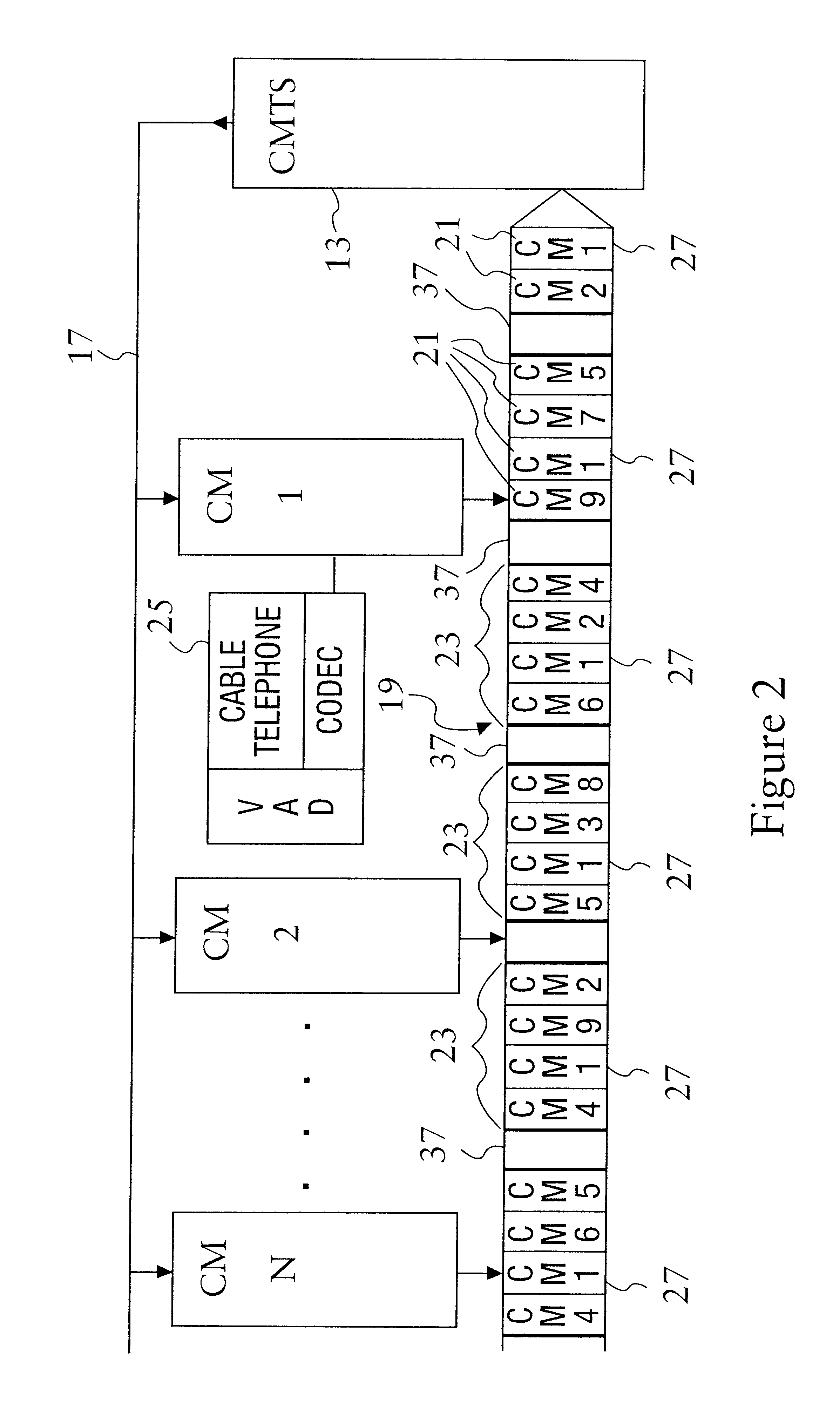Method to transmit silence compressed voice over IP efficiently in DOCSIS cable networks
a technology of compressed voice and docsis cable network, which is applied in the field of transmitting computer network data over a cable tv network, can solve the problems of high burden on the computer network, limited data carrying ability of typical telephone connection, and excess or unused capacity of cable tv cables in cable tv networks
- Summary
- Abstract
- Description
- Claims
- Application Information
AI Technical Summary
Benefits of technology
Problems solved by technology
Method used
Image
Examples
Embodiment Construction
Referring to the drawings, in particular to FIG. 1, a cable TV system has a plurality of coaxial cable TV cables 11 which connect to a cable modem termination system (CMTS) 13. Connected to each of the cable TV cables 11 are a plurality of cable modems (CM) 15. Each of the cables 11 have a plurality of downstream channels 17 for delivering the cable TV signals and computer network data, see FIG. 2. The cables 11 also have at least one upstream channel 19 for transferring data from the individual cable modems 15 to the CMTS 13.
The upstream channel 19 and the downstream channels 17 preferably share the same medium, i.e. the same coaxial cable. The preferred embodiment of the present invention is therefore more of a bus system where all of the cable modems 15 have access to the same bus, instead of separate lines or paths for each modem. A plurality of cable modems 15 share a common upstream channel 19. The upstream channel 19 is divided into a plurality of data time slots 21. When a c...
PUM
 Login to View More
Login to View More Abstract
Description
Claims
Application Information
 Login to View More
Login to View More - R&D
- Intellectual Property
- Life Sciences
- Materials
- Tech Scout
- Unparalleled Data Quality
- Higher Quality Content
- 60% Fewer Hallucinations
Browse by: Latest US Patents, China's latest patents, Technical Efficacy Thesaurus, Application Domain, Technology Topic, Popular Technical Reports.
© 2025 PatSnap. All rights reserved.Legal|Privacy policy|Modern Slavery Act Transparency Statement|Sitemap|About US| Contact US: help@patsnap.com



